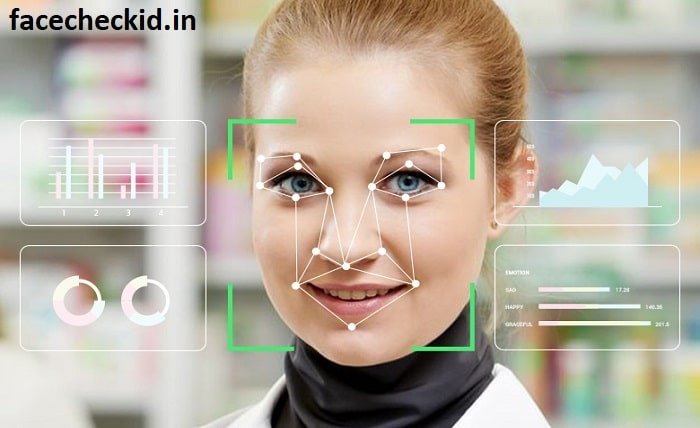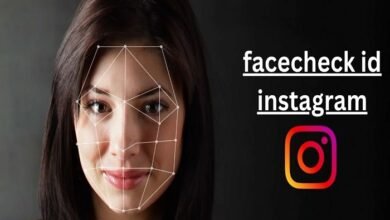A Comprehensive Guide to Face Search Technology

In today’s digital age, face search technology has emerged as a powerful tool with a wide array of applications. By leveraging advanced facial recognition algorithms, face search enables the identification and verification of individuals based on their facial features. This blog post will delve into the fundamentals of face search, explore its diverse applications, highlight its benefits and challenges, and provide insights into future trends. Whether you’re new to face search or looking to deepen your understanding, this guide offers a comprehensive overview of how face search technology is shaping the future.
What is Face Search?
Face search refers to the technology that allows for the identification and retrieval of individuals based on their facial features. Unlike face recognition, which is primarily used for authentication, face search involves scanning a database of facial images to find matches or similar faces. This technology relies on sophisticated algorithms to analyze facial features such as the distance between the eyes, the shape of the nose, and the contour of the face. Face search can be used for various purposes, from security and law enforcement to social media and marketing.
How Face Search Works
The process of face search involves several key steps. Initially, the system captures a facial image using a camera or other imaging devices. This image is then processed by facial recognition algorithms that extract and map unique facial features. These features are converted into a digital template, which is then compared against a database of stored facial images. The system searches for matches or similar faces based on the digital template, returning results that can include exact matches or visually similar individuals. Face search technology continuously evolves to improve accuracy and efficiency.
Applications of Face Search
Face search technology has a broad range of applications across different sectors. In law enforcement, face search is used to identify suspects by comparing facial images from crime scenes with databases of known offenders. In the social media industry, face search helps users tag friends and enhance photo organization. Retailers use face search to analyze customer demographics and personalize marketing strategies. Additionally, face search is employed in security systems to monitor and control access to secure areas. The versatility of face search technology makes it an invaluable tool in various fields.
Benefits of Face Search
The benefits of face search technology are significant and far-reaching. First and foremost, face search enhances security by enabling quick and accurate identification of individuals, which can help prevent crime and ensure safety. Secondly, face search is highly efficient, allowing for rapid processing of large volumes of facial images and data. Thirdly, face search can improve user experiences by offering personalized recommendations and targeted marketing. Additionally, face search technology can streamline administrative tasks by automating processes such as photo tagging and user verification.
Challenges and Limitations of Face Search
Despite its advantages, face search technology faces several challenges and limitations. One major challenge is the accuracy of face search algorithms, which can be affected by factors such as lighting, facial expressions, and image quality. Additionally, privacy concerns arise from the collection and storage of biometric data, which can lead to potential misuse or unauthorized access. Another limitation is the risk of algorithmic bias, where face search systems may produce inaccurate results based on demographic factors such as race or age. Addressing these challenges is crucial for the responsible and effective use of face search technology.
Popular Face Search Tools
Several tools and platforms offer face search capabilities, each with its own features and functionalities. Some popular face search tools include:
- Google Cloud Vision: Provides face search technology along with other image analysis features, offering robust capabilities for developers and businesses.
- Microsoft Azure Face API: Delivers advanced face search services with high accuracy and integration options for various applications.
- Amazon Rekognition: Offers face search features as part of its comprehensive image and video analysis platform.
- Face++: Known for its accuracy and versatility in facial recognition, including face search capabilities for various use cases.
- TrueFace: Specializes in facial recognition solutions, including face search for security and identification purposes.
Security and Privacy Concerns
The use of face search technology raises important security and privacy concerns. The collection and storage of biometric data require strict measures to ensure data protection and prevent unauthorized access. Face search systems must implement robust encryption and secure data storage practices to safeguard sensitive information. Additionally, users and organizations must comply with privacy regulations and obtain informed consent before collecting and using facial data. Addressing these concerns is essential for maintaining trust and ensuring the responsible use of face search technology.
Future Trends in Face Search Technology
The future of face search technology is characterized by ongoing advancements and innovations. Emerging trends include the integration of face search with artificial intelligence (AI) and machine learning, which will enhance the accuracy and efficiency of face search systems. Additionally, the development of more sophisticated algorithms will improve the ability to handle diverse facial features and complex search scenarios. We can also expect increased adoption of face search in new areas such as virtual reality (VR) and augmented reality (AR). As technology evolves, face search will continue to play a significant role in shaping the future of digital interactions and security.
Best Practices for Using Face Search
To optimize the use of face search technology, consider the following best practices:
- Ensure High-Quality Images: Use clear, high-resolution images for better accuracy in face search results.
- Implement Strong Security Measures: Protect biometric data with encryption and secure storage solutions.
- Obtain Informed Consent: Ensure that users are aware of and agree to the collection and use of their facial data.
- Regularly Update Systems: Keep face search technology and algorithms up-to-date to benefit from the latest advancements and improvements.
- Address Privacy Concerns: Comply with privacy regulations and implement measures to safeguard user information and prevent misuse.
Conclusion
Face search technology represents a significant advancement in identity verification and analysis, offering numerous benefits across various industries. By understanding how face search works, its applications, and the associated challenges, users and organizations can leverage this technology to enhance security, improve user experiences, and streamline processes. As face search continues to evolve, it will play a crucial role in shaping the future of digital interactions and security. Embracing best practices and addressing privacy concerns will ensure the responsible and effective use of face search technology.
FAQ
1. What is face search technology?
Face search technology allows for the identification and retrieval of individuals based on their facial features by comparing facial images to a database of stored images.
2. How does face search work?
Face search captures a facial image, processes it using facial recognition algorithms to map facial features, and compares it to a database of stored images to find matches or similar faces.
3. What are the benefits of face search?
Benefits of face search include enhanced security, efficient processing of large volumes of data, improved user experiences through personalization, and streamlined administrative tasks.
4. What challenges are associated with face search technology?
Challenges include accuracy issues affected by factors such as lighting and image quality, privacy concerns related to biometric data, and the potential for algorithmic bias.
5. How can I ensure the responsible use of face search technology?
To ensure responsible use, implement strong security measures, obtain informed consent, address privacy concerns, use high-quality images, and regularly update face search systems and algorithms.





